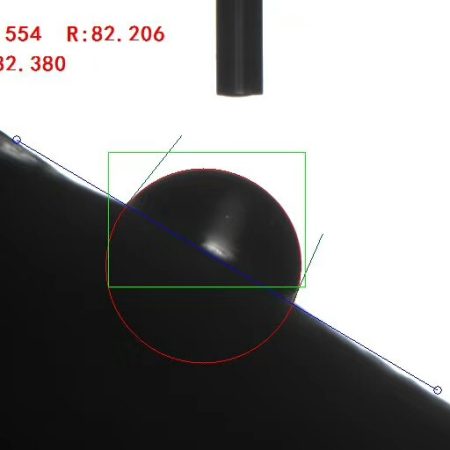לאחר שחיקה מטאלוגרפית, ישנן מספר שיטות ליטוש
After grinding, the metallographic specimen needs to be polished to remove the abrasion marks and deformation layers generated by the grinding process on the specimen, so that it becomes a smooth mirror. בהווה, the methods of polishing samples include mechanical polishing, electrolytic polishing, chemical polishing and composite polishing.
1.Mechanical polishing: polishing in a special polishing machine. Mechanical polishing is mainly divided into two steps: rough polishing and fine polishing.
Rough polishing: The purpose is to remove the polished deformed layer.
בעבר, the commonly used abrasive is α-Al2O3, Cr2O3 or Fe2O3 with a particle size of 10-20μm, and is used as a suspension with water. בהווה, artificial diamond abrasives have gradually replaced abrasive materials such as alumina, because it has the following advantages:
1) Compared with alumina, the polishing rate of diamond abrasive particles with much smaller particle size is much larger, such as the polishing rate of 4-8μm diamond abrasive particles is similar to the polishing rate of 10-20μm alumina or silicon carbide;
2) Shallow surface deformation layer;
3) Good polishing quality.
Fine throwing: also known as final throwing, the purpose is to remove the deformation layer generated by rough throwing, so that the polishing damage is reduced to a minimum. The commonly used polishing abrasives are MgO and γ-Al2O3, of which MgO has a good polishing effect, but the polishing efficiency is low and difficult to master; The polishing rate of γ-Al2O3 is high and easy to master.
2.Electrolytic polishing: The use of anodic corrosion method to make the surface of the sample smooth and bright polishing method.
Electrolytic polishing with stainless steel as the cathode, the polished sample as the anode, the container contains electrolyte, when the current is switched on, the metal ions of the sample dissolve in the solution, under certain electrolytic conditions, the sample surface of the slightly convex part of the dissolution faster than the concave, so that the sample surface is gradually rough and flat bright.
יתרונות וחסרונות:
1: Compared with mechanical polishing, electrolytic polishing is a pure electrochemical dissolution process, without mechanical force, and does not cause surface deformation of the metal.
2: This method should be used for single-phase alloys with low hardness and aluminum alloy, magnesium alloy, סגסוגת נחושת, titanium alloy, פלדת אל - חלד, וכו ', which are difficult to do in general mechanical polishing.
3: Electrolytic polishing on the sample polishing degree requirements are low (generally with 800 water sandpaper can be ground), fast speed, יעילות גבוהה.
4: Electrolytic polishing is particularly sensitive to the non-uniformity of the chemical composition of the material and micro-segregation, and the non-metallic inclusions will be severely corroded, so it is not suitable for metal materials with serious segregation and metallographic samples for inclusion testing.
הערה: electrolytic polishing must choose the right voltage, control the current density, too low and too high voltage can not achieve the purpose of normal polishing.
3.Chemical polishing: The use of chemical dissolution to obtain a smooth polished surface.
The sample is dipped in a chemical polishing liquid, stirred appropriately or rubbed with cotton, and a bright surface can be obtained after a period of time. Chemical polishing has the effect of chemical corrosion, can show the metallographic structure, and can be observed directly under the microscope after polishing.
Chemical polishing is simple to operate, low cost, does not require special equipment, the original sample surface finish requirements are not high.
The composition of chemical polishing fluid varies with the polishing material. Generally mixed acid. Commonly used acids are: orthophosphoric acid, chromic acid, sulfuric acid, acetic acid, nitric acid and hydrogen acid; In order to increase the activity of the metal surface to facilitate the chemical polishing, a certain amount of hydrogen peroxide is added. After the chemical polishing liquid is used, the metal ions in the solution increase, the polishing effect is weakened, and it needs to be replaced frequently.

